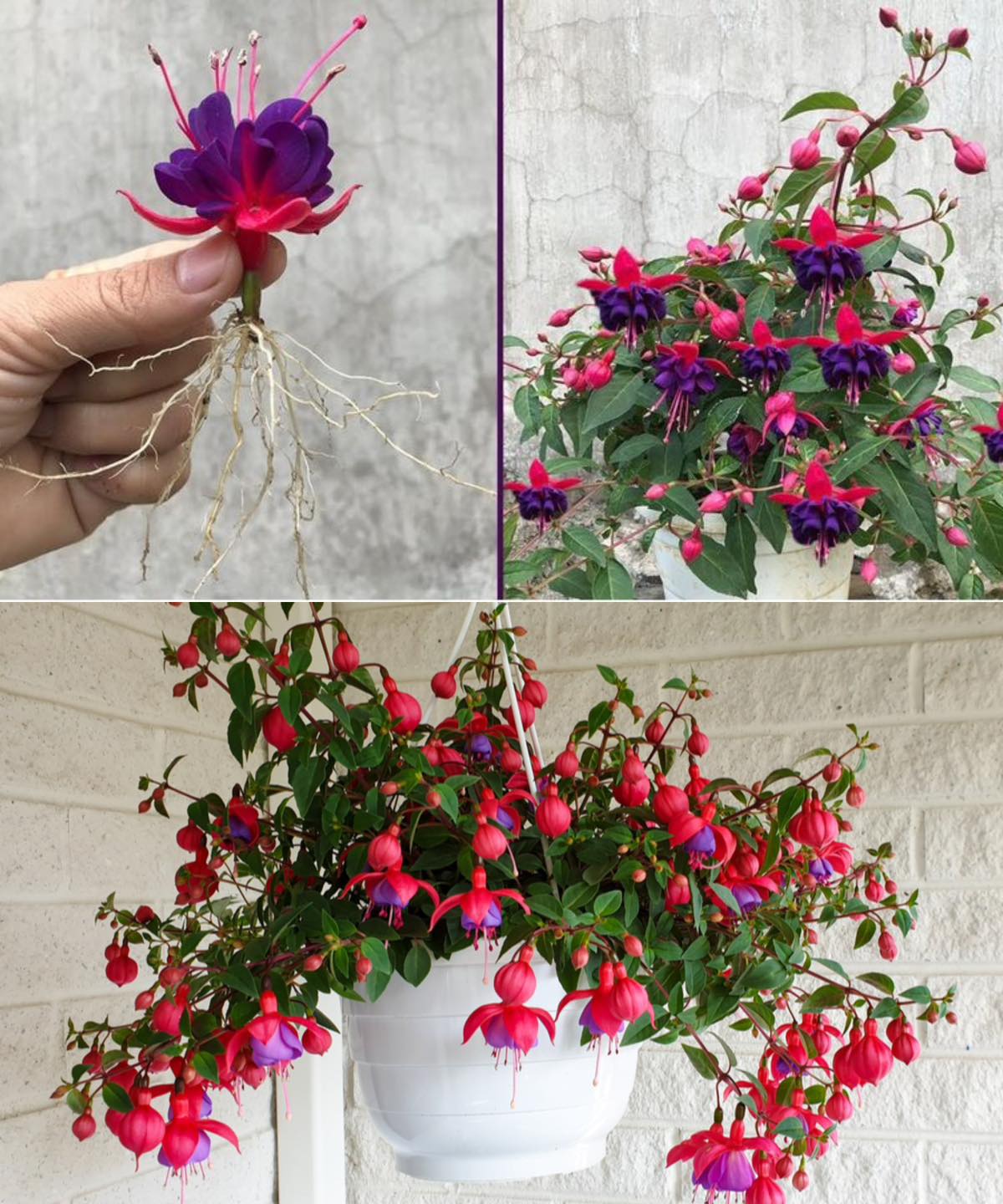Fuchsia plants are renowned for their elegant, pendulous flowers and vibrant colors, making them a popular choice for gardens, hanging baskets, and containers. If you’re considering adding fuchsias to your garden or indoor space, here’s a comprehensive guide to growing and caring for these stunning plants.
Choosing the Right Fuchsia Varieties
Fuchsias come in a wide range of varieties, including trailing, upright, and bushy forms, each offering its own unique charm. When selecting fuchsia plants for your garden or home, consider factors such as growth habit, flower color, and bloom time to ensure they complement your aesthetic preferences and growing conditions.
Ideal Growing Conditions for Fuchsias
Fuchsias thrive in cool, temperate climates and prefer partial shade to filtered sunlight. Plant them in well-draining soil enriched with organic matter to promote healthy root growth and blooming. If growing fuchsias indoors, place them near a bright, east- or west-facing window where they can receive indirect sunlight for several hours each day.

Planting Fuchsias
When planting fuchsias in the garden or containers, dig a hole slightly larger than the root ball and gently loosen the roots before placing the plant in the hole. Backfill with soil and water thoroughly to settle the soil around the roots. Ensure that the planting site offers adequate airflow to prevent fungal diseases and promote healthy growth.
Watering and Fertilizing Fuchsias
Keep the soil evenly moist but not waterlogged, especially during hot, dry weather. Water fuchsias deeply whenever the top inch of soil feels dry to the touch, and avoid wetting the foliage to prevent leaf spot and other fungal diseases. Fertilize fuchsias monthly during the growing season with a balanced, water-soluble fertilizer to encourage vigorous growth and abundant flowering.
Pruning and Deadheading
Regular pruning and deadheading are essential for maintaining the shape and blooming of fuchsia plants. Remove spent flowers and any dead or diseased foliage to promote continuous blooming and prevent the spread of pests and diseases. Prune back leggy or overgrown stems in late winter or early spring to encourage bushier growth and more compact habit.
Pests and Diseases
Keep an eye out for common pests and diseases that may affect fuchsia plants, including aphids, whiteflies, spider mites, and botrytis blight. Inspect the foliage regularly for signs of pest infestations or fungal infections, and treat affected plants promptly with insecticidal soap, neem oil, or fungicides as needed.
Overwintering Fuchsias
In regions with cold winters, fuchsia plants may need protection from frost and freezing temperatures. Consider overwintering fuchsias indoors or in a sheltered location such as a garage or greenhouse until the danger of frost has passed. Reduce watering and fertilizing during the dormant period to allow the plants to rest and conserve energy for the next growing season.
Enjoying the Beauty of Fuchsias
With proper care and attention, fuchsia plants will reward you with a profusion of graceful flowers that brighten your garden or indoor space from spring to fall. Whether grown as bedding plants, hanging baskets, or container specimens, fuchsias add a touch of elegance and charm to any landscape or home environment.
Growing and caring for fuchsia plants is a rewarding experience that allows you to enjoy the beauty of their delicate flowers and lush foliage throughout the growing season. By providing the right growing conditions, regular maintenance, and proper pest and disease management, you can cultivate healthy, thriving fuchsia plants that enhance your outdoor or indoor space with their stunning blooms.
